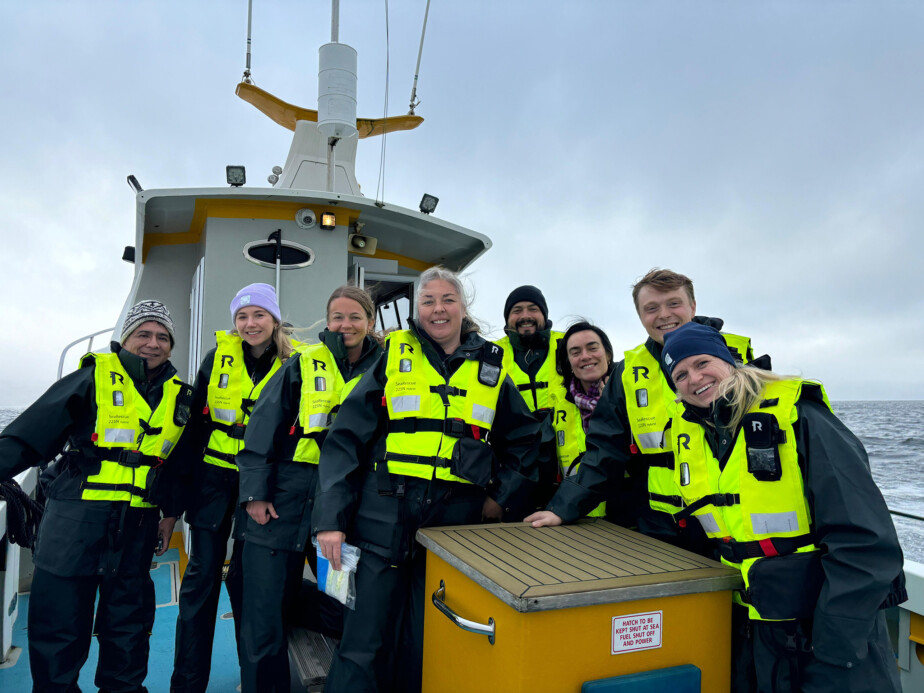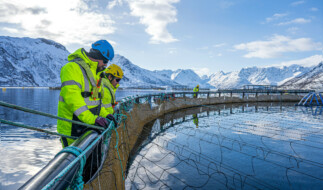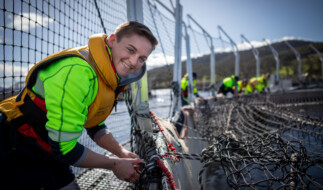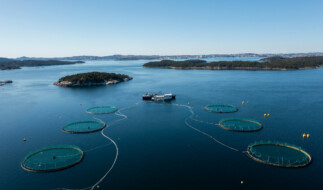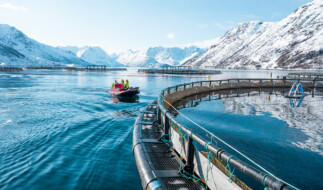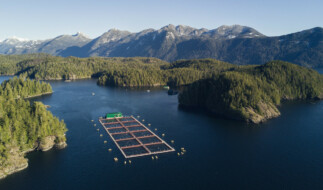Behind the Scenes with GSI: A Visit to Bakkafrost Scotland
Salmon Welfare Environmental Sustainability
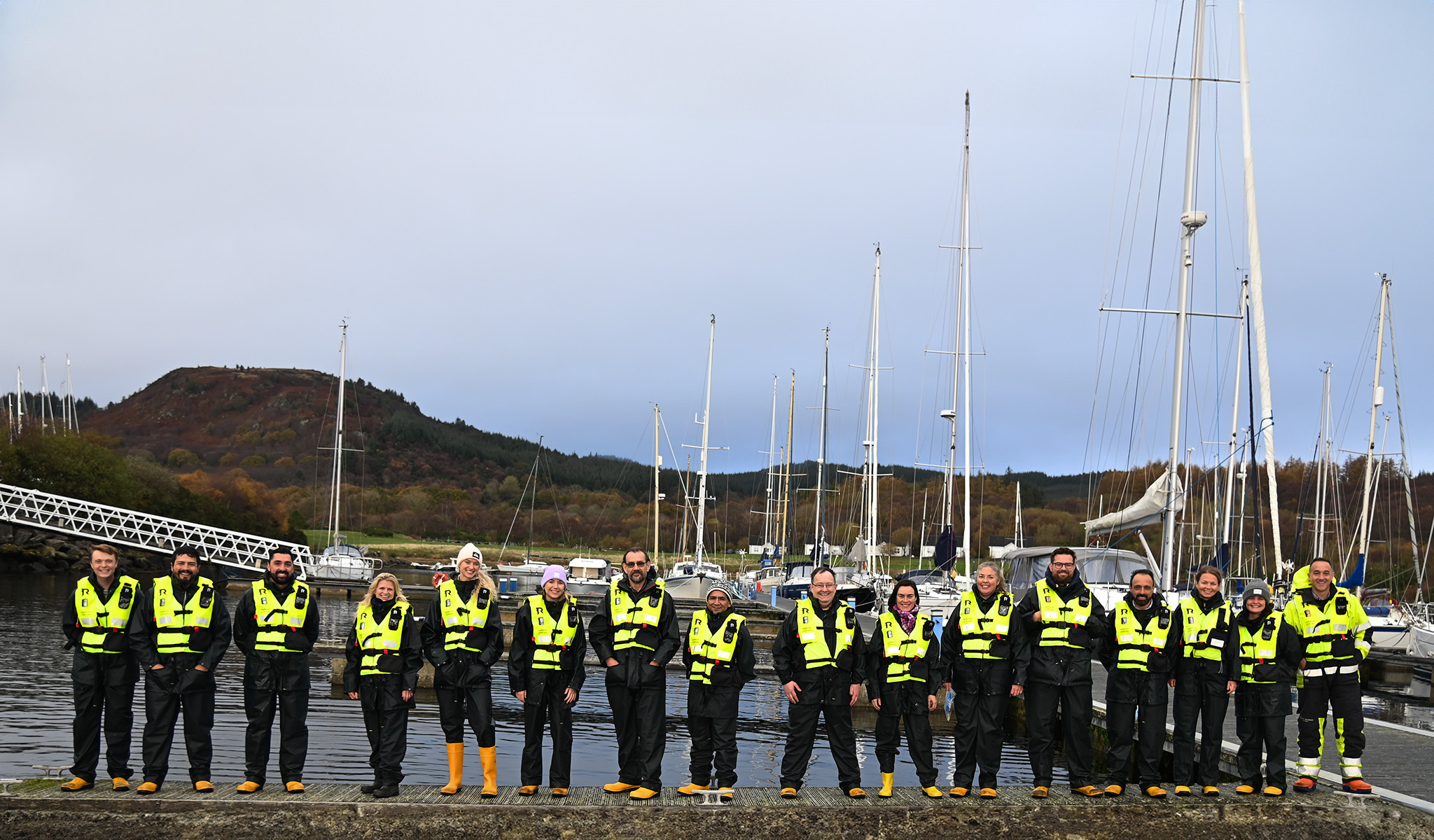
Global Salmon Initiative shares a behind the scenes tour of member Bakkafrost’s farm in Scotland.
When GSI’s Fish Health and Welfare Task Force meets for their annual best practice sharing workshop, we tend to keep it on land. However, this year, the group comprising fish health experts, biologists, veterinarians, and technical managers took a step away from the usual workshop setting and moved further afield to Bakkafrost Scotland’s Loch Fyne salmon farm. Here, the group had the opportunity to experience the day-to-day of salmon farming to ensure optimal fish health and welfare and see some of the technological advancements in operation to support farmers' work.
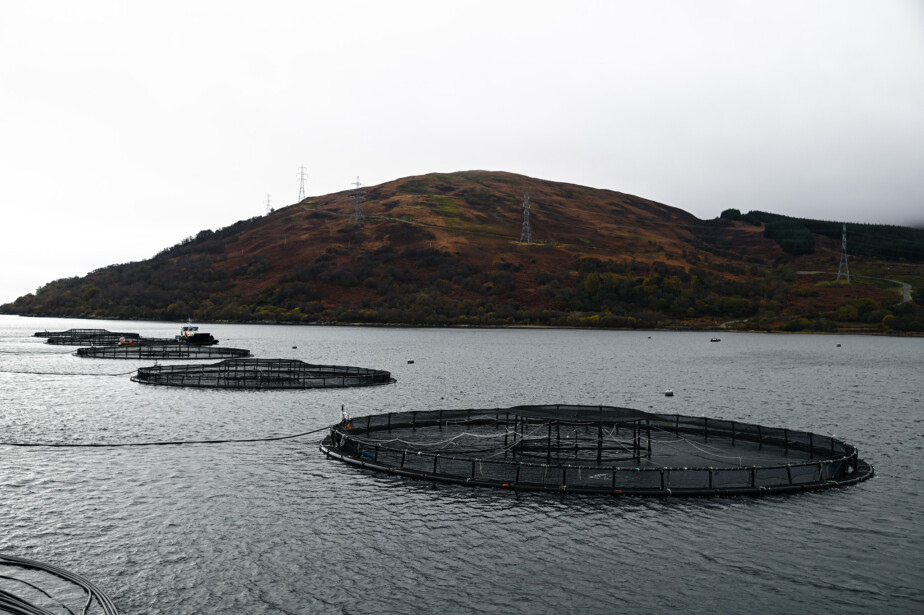
Why choose Loch Fyne for a salmon farm?
Loch Fyne, Scotland, known for its beautiful scenery and rich marine environment, is an ideal location for a salmon farm. Locations of salmon farms, in Scotland and globally, are carefully chosen based on a variety of criteria:
- Pristine, cool, flowing waters: Essential for providing a natural environment for healthy salmon growth
- High oxygen levels and stable salinity: Key for maintaining optimal fish health and minimizing stress
- Sheltered conditions: Protection from strong winds and waves ensures the pens are secure and operations run smoothly
- Deep water: Ample depth accommodates large salmon pens, allowing the fish plenty of room to swim and thrive
These natural features highlight how Scotland’s geography provides an opportunity for sustainable aquaculture practices and is a perfect place for farmed salmon to thrive in their ecosystem. However, with a changing climate impacting environmental conditions, including rising water temperature, the group discussed the importance of building knowledge on how the changing climate will impact farming operations, and how to strengthen the adaptive capacity of the sector to ensure a sustainable future. One of the ways we utilize our global network within GSI is to share expertise and best practices to support improved resiliency and innovative capacity across operations in light of such risks.
While touring the farms, the group had the chance to review some of the key advancements being implemented on the sites to support improved knowledge and outcomes related to fish welfare and environmental performance.
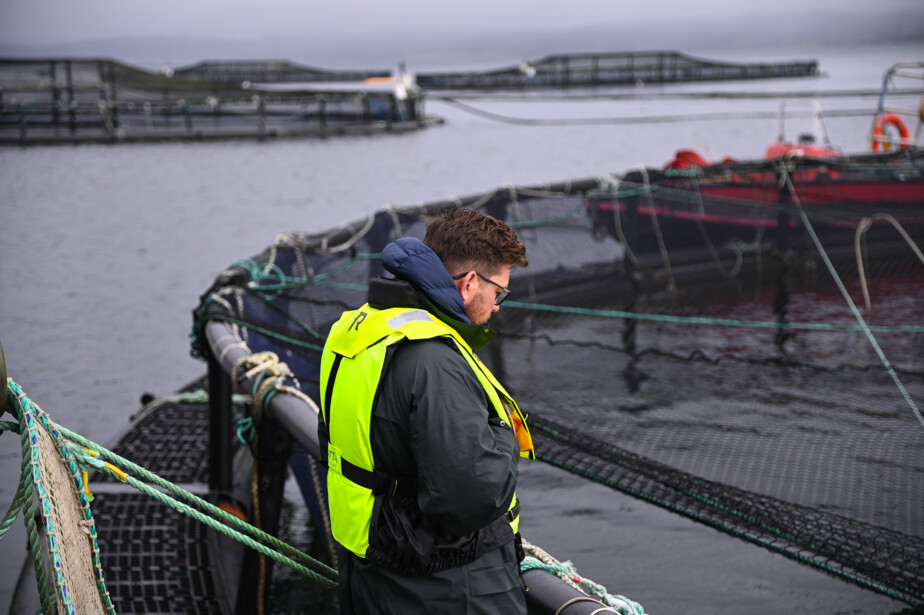
Digitalization of salmon feeding
Historically farmers would feed fish by ‘hand’ – directly placing salmon feed into the pens. However, nowadays farms (including this one) utilize advanced technology to automate the delivery of precise amounts of feed as and when the fish need it. This system reduces feed waste, minimizes impact on local ecosystems, and improves overall feed efficiencies. The technology uses rotating feed dispensers synchronized to underwater cameras and AI trackers to collect data on how well the fish are eating and allow farmers to act accordingly.
While feeding can be set to automatic, technical experts override the functions to make necessary changes to feeding routines as and when required based on additional insights gathered from water quality monitoring tests (e.g., detecting the presence of jellyfish and/or planktons), external environmental factors (e.g., severe changes to weather) and/or the health and wellbeing of the salmon.
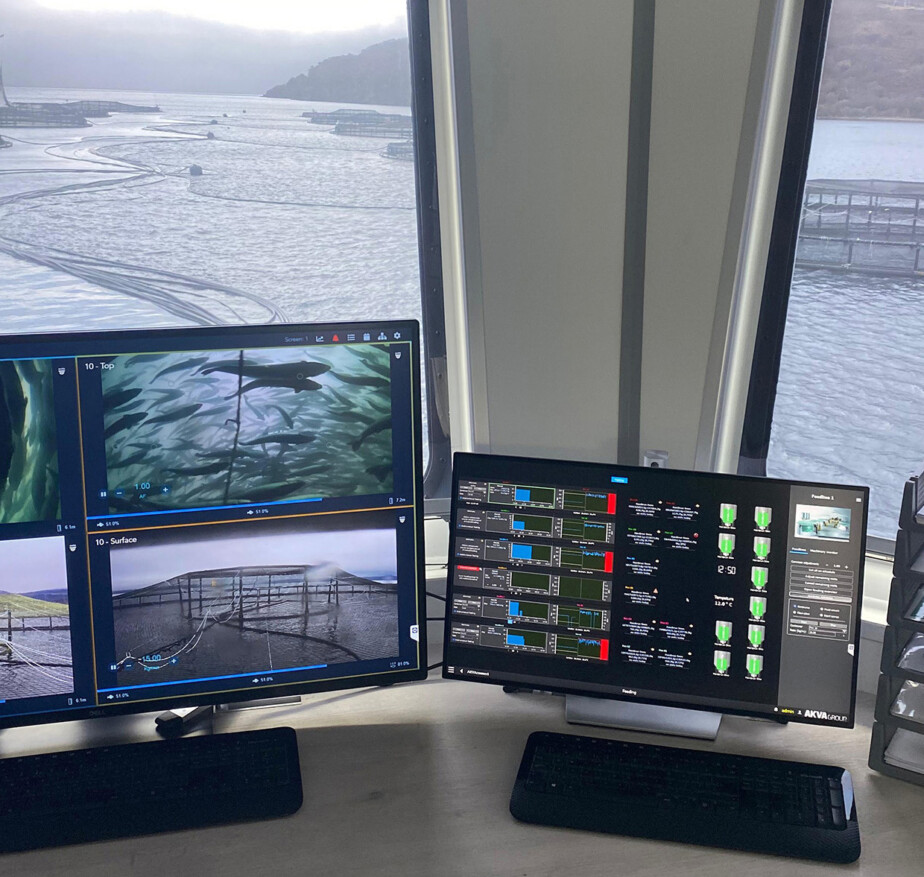
AI tools and cameras
Underwater cameras and sensors monitor the salmon in real time, tracking everything from their health to their swimming patterns, as well as environmental parameters such as water temperature, oxygen levels, and salinity (salt levels). All of this information allows farmers to make real-time decisions on management practices to ensure optimal health is maintained even in changing conditions. Within GSI, our member companies are working with several tools that allow this level of continuous tracking and are working closely to further develop the technology as a core role in current and future farming operations.
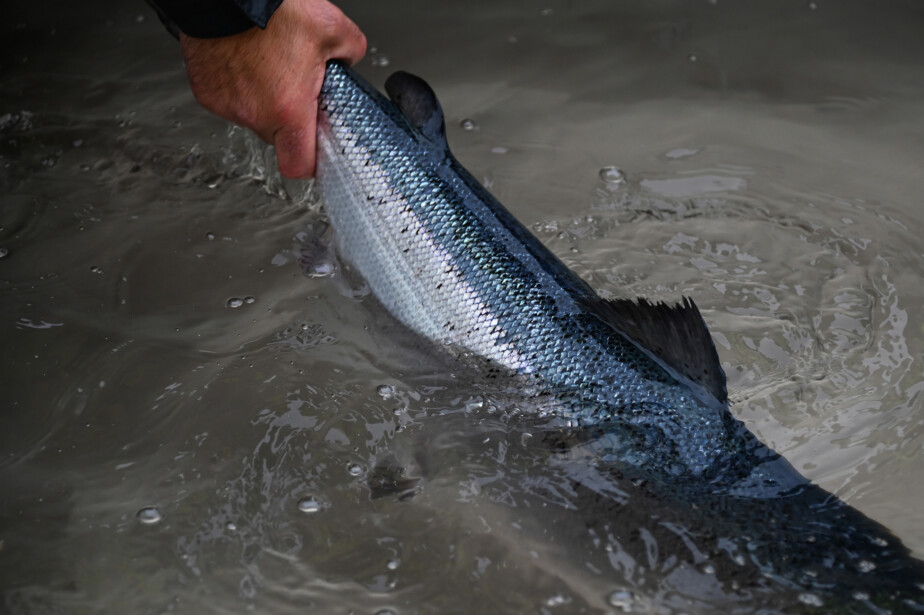
Fish health screening
While at Loch Fyne, the team witnessed the farmers’ daily salmon health checks that monitor key health indicators such as gill health, any signs of illness, and testing the water for pathogens or viruses. These checks are carried out across all farms to ensure that if there are any biological challenges, farmers can act quickly to manage and mitigate any impacts. Advanced diagnostic tools, including polymerase chain reaction (PCR) and blood biomarkers, may be used to detect and identify potential health threats at an early stage.
Each GSI salmon farmer has slightly different approaches to managing fish health, but all proactively screen and address health concerns to ensure salmon are raised to the highest welfare standards.
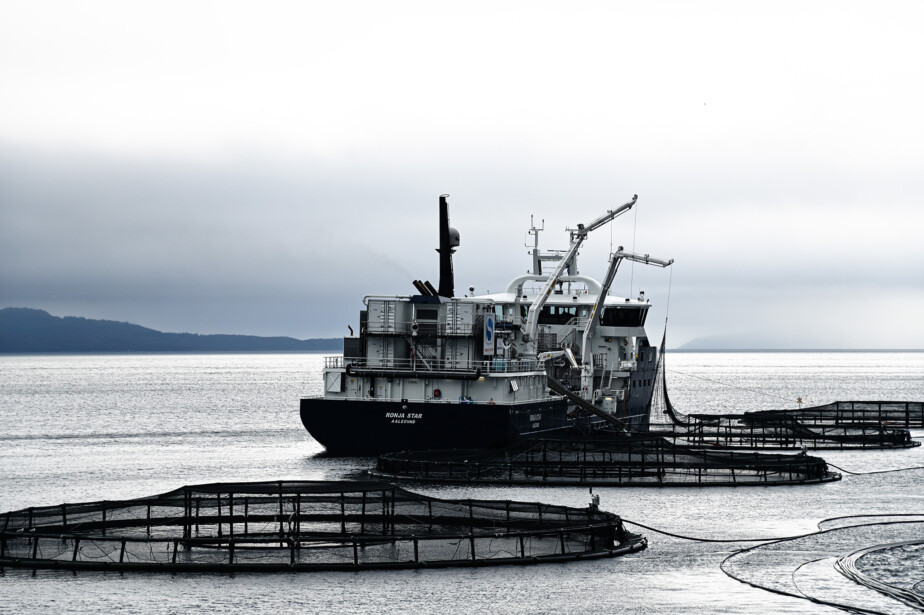
Innovative salmon farming technology
During our visit, the group also witnessed the Ronja Star – the largest well boat in operation in Scottish aquaculture. This hybrid vessel features cutting-edge technology, using a Flatsetsund Engineering (FLS) sea lice removal system and a freshwater treatment process to support farmers in their fish health management. The boat's reverse osmosis system desalinates seawater to produce freshwater which can be used as a non-medicinal method for sea lice treatment while supporting better gill health. The boat prioritizes fish welfare along with sustainability practices.
Collaborating for a more sustainable future
Within GSI, we acknowledge that there is a lot we can learn from each other to ensure a more sustainable future for the global sector. Our Fish Health and Welfare Task Force meets annually to share knowledge and expertise on best practices on topics such as sea lice management, gill health, and fish welfare reporting as well as more emerging challenges such as the impacts of a changing climate. By stepping out of the formal setting and into the field, the group was able to put theory into practice and see first-hand how farms in Scotland are working hard to continuously improve their operations and utilize cutting-edge technology to ensure the highest welfare standards for their fish and ultimately ensure their salmon are raised to be better for people and planet. See our progress in our annual Sustainability Report.
